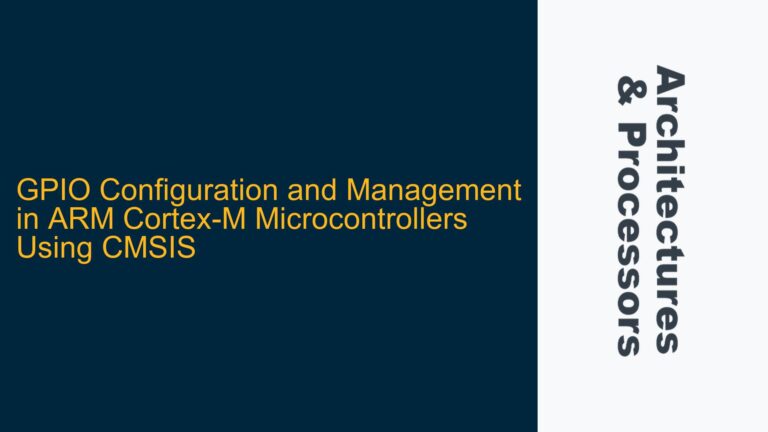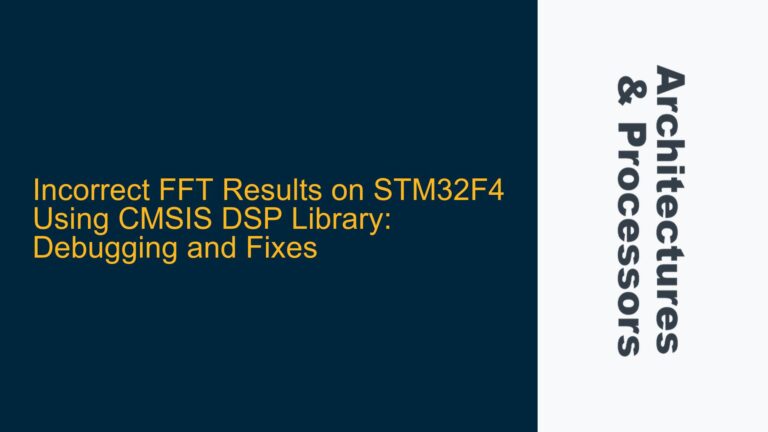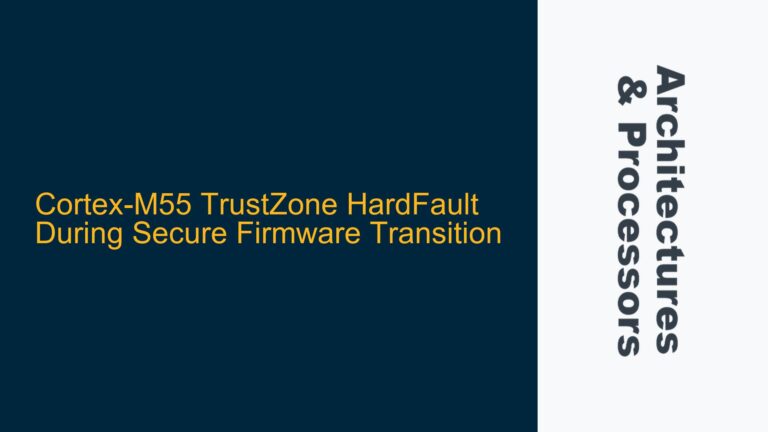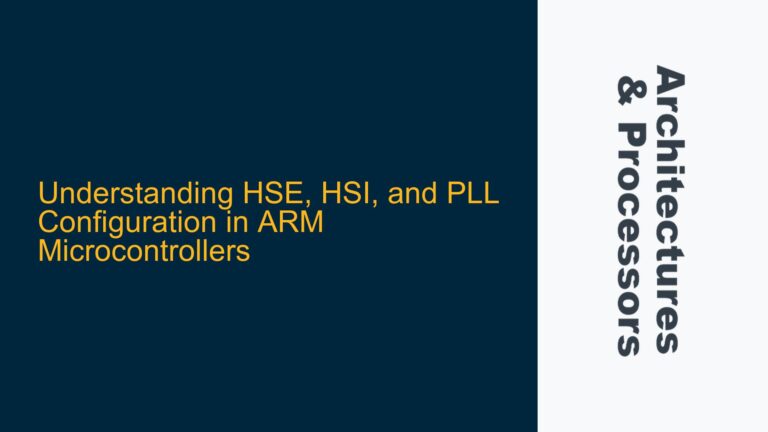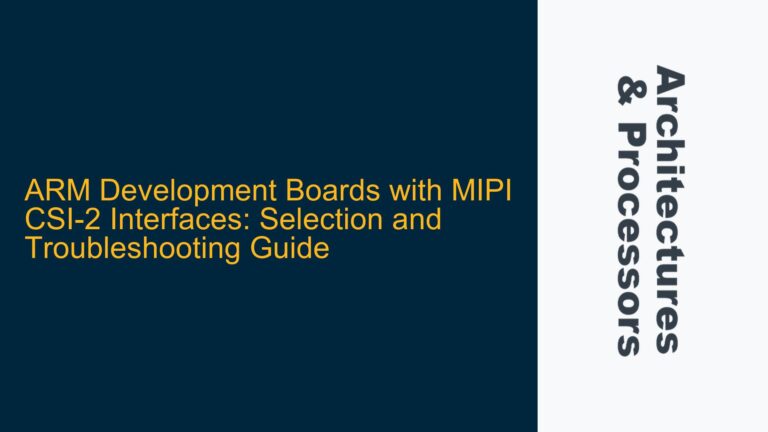ARM A78-AE Core Performance Evaluation and MIPS CN78XX Comparison
When transitioning from a MIPS CN78XX 48-core architecture to an ARM A78-AE 16-core architecture, it is crucial to understand the performance characteristics of both architectures to ensure that the ARM cores can handle the computational load, especially when offloading a portion of the workload to an FPGA. This analysis will focus on equating the processing horsepower of the ARM A78-AE cores to the MIPS CN78XX cores, considering a scenario where 40% of the processing is offloaded to an FPGA, leaving 60% of the load to be handled by the ARM cores.
ARM A78-AE Core Performance Metrics
The ARM Cortex-A78AE is a high-performance, power-efficient processor designed for advanced applications, including networking and automotive systems. It features out-of-order execution, advanced branch prediction, and a deep pipeline to maximize instruction throughput. The A78AE also supports ARM’s DynamIQ technology, allowing for flexible core configurations and efficient power management.
Key performance metrics for the ARM A78-AE core include:
- Clock Speed: The A78AE can operate at high clock speeds, typically ranging from 2.0 GHz to 3.0 GHz, depending on the manufacturing process and power constraints.
- Instructions Per Cycle (IPC): The A78AE has a high IPC due to its out-of-order execution and advanced branch prediction, which allows it to execute more instructions per clock cycle compared to simpler in-order cores.
- Cache Hierarchy: The A78AE features a multi-level cache hierarchy, including L1, L2, and L3 caches, which reduce memory latency and improve overall performance.
- SIMD and Floating-Point Performance: The A78AE supports ARM’s Advanced SIMD (NEON) and floating-point units, which are essential for high-performance computing tasks, including signal processing and data analytics.
MIPS CN78XX Core Performance Metrics
The MIPS CN78XX is a multi-core processor designed for networking applications, featuring 48 cores with a focus on high throughput and low latency. The CN78XX cores are optimized for packet processing and other networking tasks, with a focus on deterministic performance and efficient resource utilization.
Key performance metrics for the MIPS CN78XX core include:
- Clock Speed: The CN78XX cores typically operate at lower clock speeds compared to the ARM A78AE, often in the range of 1.5 GHz to 2.0 GHz.
- Instructions Per Cycle (IPC): The CN78XX cores are designed for in-order execution, which generally results in lower IPC compared to out-of-order cores like the A78AE. However, the CN78XX cores are highly optimized for specific networking tasks, which can offset the lower IPC in certain workloads.
- Cache Hierarchy: The CN78XX features a cache hierarchy optimized for networking workloads, with a focus on reducing latency for packet processing tasks.
- Hardware Acceleration: The CN78XX includes hardware acceleration for networking tasks, such as packet classification, encryption, and compression, which can significantly reduce the computational load on the cores.
Equating ARM A78-AE and MIPS CN78XX Performance
To determine whether the ARM A78-AE cores can handle 60% of the computational load previously handled by the MIPS CN78XX cores, we need to compare the performance of both architectures in terms of raw computational power, memory bandwidth, and latency.
Raw Computational Power
The raw computational power of a processor core can be estimated using the following formula:
[ \text{Computational Power} = \text{Clock Speed} \times \text{IPC} \times \text{Number of Cores} ]
For the ARM A78-AE:
[ \text{Computational Power}_{\text{ARM}} = 2.5 , \text{GHz} \times 2.0 , \text{IPC} \times 16 , \text{cores} = 80 , \text{GIPS} ]
For the MIPS CN78XX:
[ \text{Computational Power}_{\text{MIPS}} = 1.75 , \text{GHz} \times 1.2 , \text{IPC} \times 48 , \text{cores} = 100.8 , \text{GIPS} ]
In this simplified comparison, the MIPS CN78XX has a higher raw computational power due to the larger number of cores. However, this does not account for the efficiency of the ARM cores in handling specific workloads, especially when considering the offloading of 40% of the processing to an FPGA.
Memory Bandwidth and Latency
Memory bandwidth and latency are critical factors in determining the overall performance of a multi-core system. The ARM A78-AE features a high-bandwidth memory interface and a sophisticated cache hierarchy, which can reduce memory latency and improve performance for data-intensive tasks. The MIPS CN78XX, on the other hand, is optimized for low-latency packet processing, with a cache hierarchy designed to minimize latency for networking workloads.
When offloading 40% of the processing to an FPGA, the memory bandwidth and latency requirements for the ARM cores may be reduced, as the FPGA can handle a significant portion of the data processing. This can allow the ARM cores to focus on higher-level tasks, potentially improving overall system performance.
Workload Optimization and FPGA Offloading
The key to determining whether the ARM A78-AE cores can handle 60% of the computational load lies in optimizing the workload and effectively offloading tasks to the FPGA. The FPGA can be used to accelerate specific tasks, such as packet processing, encryption, and compression, which can significantly reduce the computational load on the ARM cores.
To achieve this, it is essential to:
- Profile the Workload: Identify the specific tasks that can be offloaded to the FPGA and those that must be handled by the ARM cores. This involves analyzing the computational requirements, memory access patterns, and latency constraints of each task.
- Optimize Task Partitioning: Determine the optimal partitioning of tasks between the ARM cores and the FPGA. This involves balancing the computational load, memory bandwidth, and latency requirements to ensure that the ARM cores are not overwhelmed.
- Implement Efficient Data Transfer: Ensure that data transfer between the ARM cores and the FPGA is efficient, with minimal latency and overhead. This may involve using high-speed interfaces, such as PCIe or AXI, and optimizing the data transfer protocols.
Performance Simulation and Benchmarking
To accurately determine whether the ARM A78-AE cores can handle 60% of the computational load, it is essential to perform performance simulation and benchmarking. This involves:
- Developing a Performance Model: Create a performance model that simulates the behavior of the ARM cores, the FPGA, and the memory subsystem. This model should account for the computational power, memory bandwidth, and latency of each component.
- Running Benchmarks: Execute benchmarks that represent the typical workload of the system, including both the tasks handled by the ARM cores and those offloaded to the FPGA. Measure the performance metrics, such as execution time, throughput, and latency, to determine whether the ARM cores can meet the performance requirements.
- Analyzing Results: Analyze the benchmark results to identify any performance bottlenecks or areas for optimization. This may involve adjusting the task partitioning, optimizing the data transfer protocols, or tuning the ARM core configurations.
Conclusion
Transitioning from a MIPS CN78XX 48-core architecture to an ARM A78-AE 16-core architecture requires a thorough understanding of the performance characteristics of both architectures. By carefully analyzing the raw computational power, memory bandwidth, and latency, and effectively offloading tasks to an FPGA, it is possible to determine whether the ARM cores can handle 60% of the computational load. Performance simulation and benchmarking are essential tools for validating the performance of the ARM cores and ensuring that the system meets the required performance targets.
In summary, the ARM A78-AE cores, with their high IPC, advanced cache hierarchy, and support for DynamIQ technology, offer a powerful and efficient solution for high-performance computing tasks. By leveraging the capabilities of the FPGA and optimizing the workload partitioning, it is possible to achieve the desired performance with fewer ARM cores, making the ARM A78-AE a viable alternative to the MIPS CN78XX for networking and other advanced applications.


